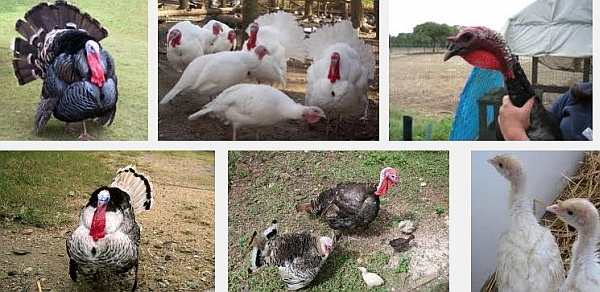Turkeys are easier to raise than chicken and turkey meat is more expensive and easily sold in hotels.

According to those with experience in raising turkeys, the following may be used as guides:
1. Turkeys may be allowed to roam about, and gather in barn at night.
2. Since turkeys eat plants, those that they should not eat must be fenced.
3. Besides grass, turkeys should be fed with mixed grated coconut, fruit peels, corn, sorghum, fish and shrimps.
4. Turkeys in coops (that are elevated from the ground), consume more food than those roaming about but they should not be allowed to stay in coop always because this will easily wear out the flooring of their house because of their weight.
5. For 500 turkeys, 15 sacks of feed are normally consumed weekly, but this is reduced if they are allowed to roam. One way is to have a shelter in the midst of their pastureland where they will always find food and water.
6. This shelter must also provide place for sleep and nest. The shelter must be about three (3) meters high, five (5) meters wide and 10 meters long. The four sides are open, and the floor can absorb manure. In one side are nests, and at the other are food and water in separate containers.
7. The flooring should be three (3) meters longer than the shelter, fenced with about five (5) feet wire where they can mate and spread out their wings, and eat.
8. If the weather is good, they should be allowed to roam to pick insects and eat grass so as not to run out of forage or overeat them in a place, they should be transferred from place to place in the field, separated by wire fence.
9. Feeding is twice a day — in the morning before they are set free, and in the afternoon when they come back.
10. Feed must contain 24% protein, which is not attained in most commercial feeds. In the US, turkeys are given: 24% protein, 2% calcium and 0.9% phosphorus. Here, they are given 16% protein, 24% calcium and 1% phosphorus. Turkeys grow up to five (5) kilos in four months in this diet. Normally, a male turkey weighs 10 kilos and a female 7 kilos within 18 weeks.
11. They must always be provided with food and clean water. If necessary (which is not often) they are given powdered antibiotic in their food and drink or if necessary, by injection.
12. The turkey chick cannot see up to age one week after hatching, so they are spoon fed until they can eat by themselves. (In the US, they are given milk, which is too expensive for us)
13. For every 20-25 female turkeys, only one male is needed so that egg laying will be continuous, the mother turkey is not allowed to sit on her eggs. These are gathered and hatched in the incubator.
14. Eggs are gathered in April or May, and incubated around July.
15. They are hatched in the first week of August and are raised from 26-28 weeks. (The raisers set these for thanksgiving Day or Christmas).
16. Turkeys molt (shed feathers) once a year. After molting, they lay more eggs. So, the raisers make them molt in preparation for Christmas. Molting is hastened when food is scarce and day is short. So, the feed of layers is reduced and are kept longer in a dark coop and by releasing them much later in the morning.
17. Turkeys diseases generally, are chicken pox, blackening of the head, birds’ pest, neck paralysis (can’t swallow) and external parasite. The blackening of the head is the most serious disease of turkeys. This is acquired from feeds and contaminated water.
Source: Tekno-tulong – Greenfields Feb. 1990
